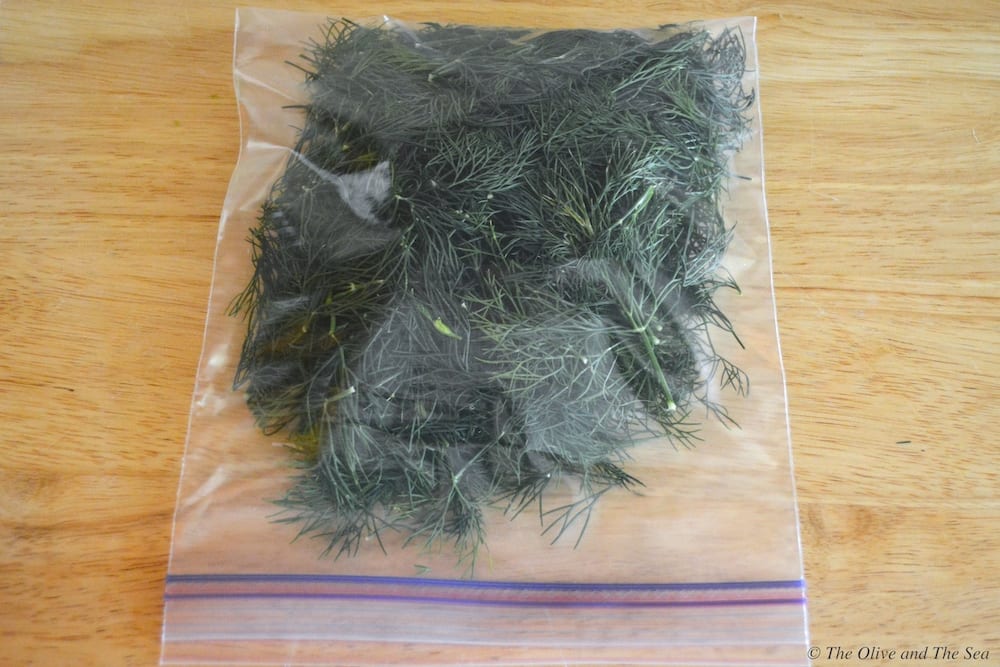Freezing Dill Weed
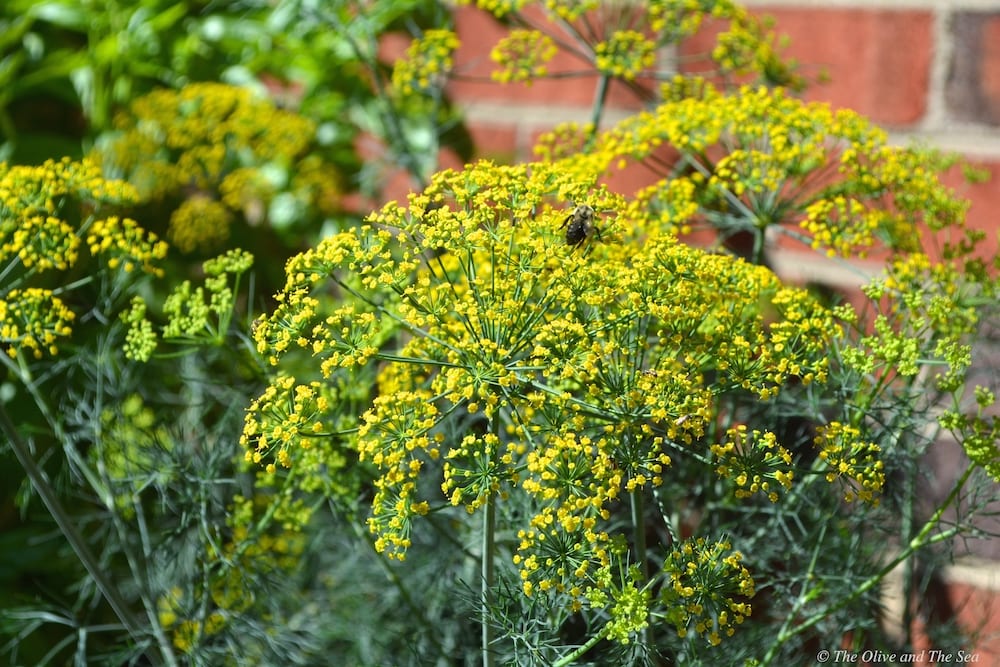
Dill is used extensively in Mediterranean cooking. It is available both fresh and dry year-round in most grocery stores and is an easy herb to grow at home. If you opt to grow your own, you will want to preserve it for use during the winter months. Preservation methods include drying or freezing. My preferred approach is the latter, which maintains the flavor intensity of the fresh herb and requires less work than drying. This same freezing process can also be used to preserve store bought dill.
A first step is knowing when to harvest your dill. Unlike the above picture, you want to harvest the leaves before the plant flowers, after which the leaves become more spares. You’ll notice that the bunches of dill at grocery stores (which have been harvested at the correct time) are soft and bushy. The dill plant in your herb garden will look the same before it starts to flower.
In theory, you want to periodically cut the young dill stalks, wash and freeze them, adding to your stash as the season progresses. But reality often differs from theory and nature never waits when life gets too busy… If like me, you find yourself with dill plants in full bloom, don’t panic, not all is lost! The below process steps will show you how to remove the dill leaves after the plant has bloomed. If you’re freezing dill that hasn’t yet bloomed or that you picked up from the grocery store, you can skip straight to the step about washing the dill.
Freezing Process Steps
- Cut the dill stalks
- Run the stems with the leaves in between your thumb and index. The leaves should easily separate from the stem, bunching up in between your fingers
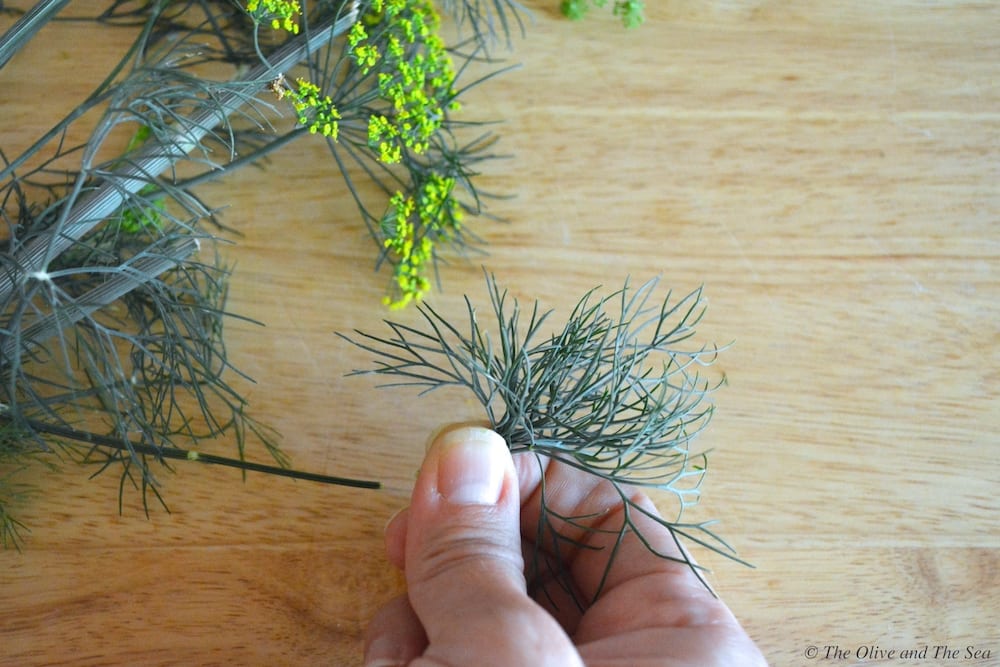
- Gather the dill leaves into a pile
- Using a strainer, rinse the dill
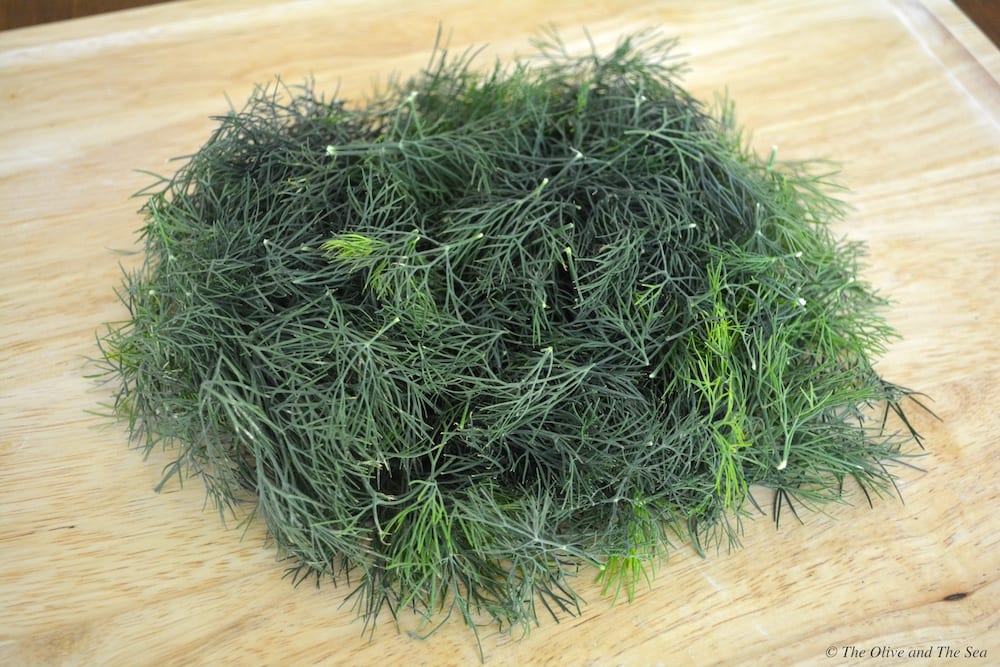
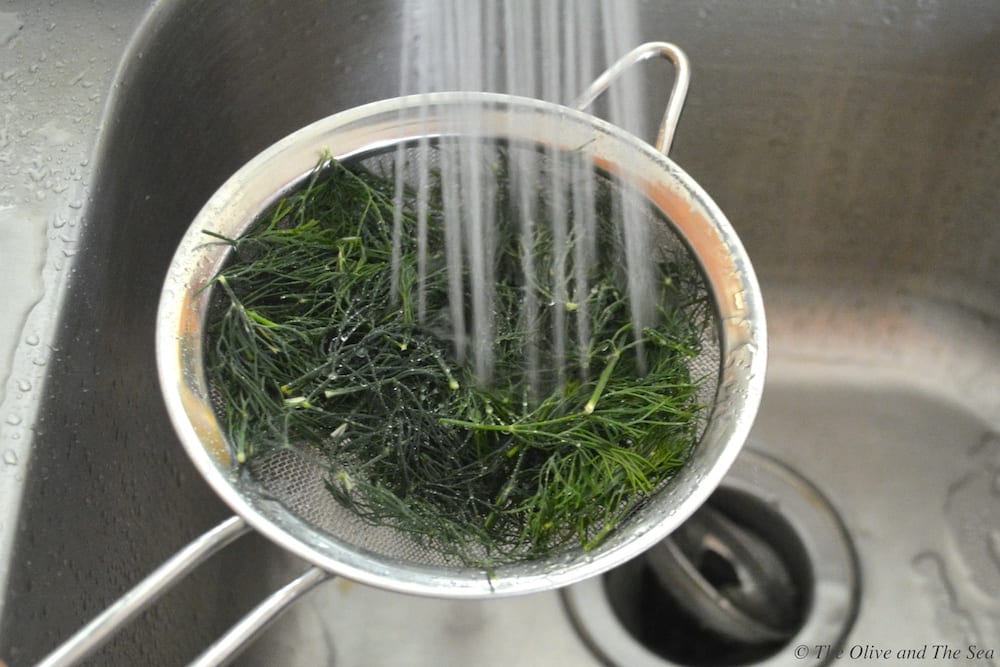
- Drying the dill prior to freezing will help prevent ice crystals from forming around the leaves
- Place the dill in between paper towels and pat dry. Using a lettuce spinner to dry the dill beforehand will accelerate the drying process and reduce the amount of paper towels needed
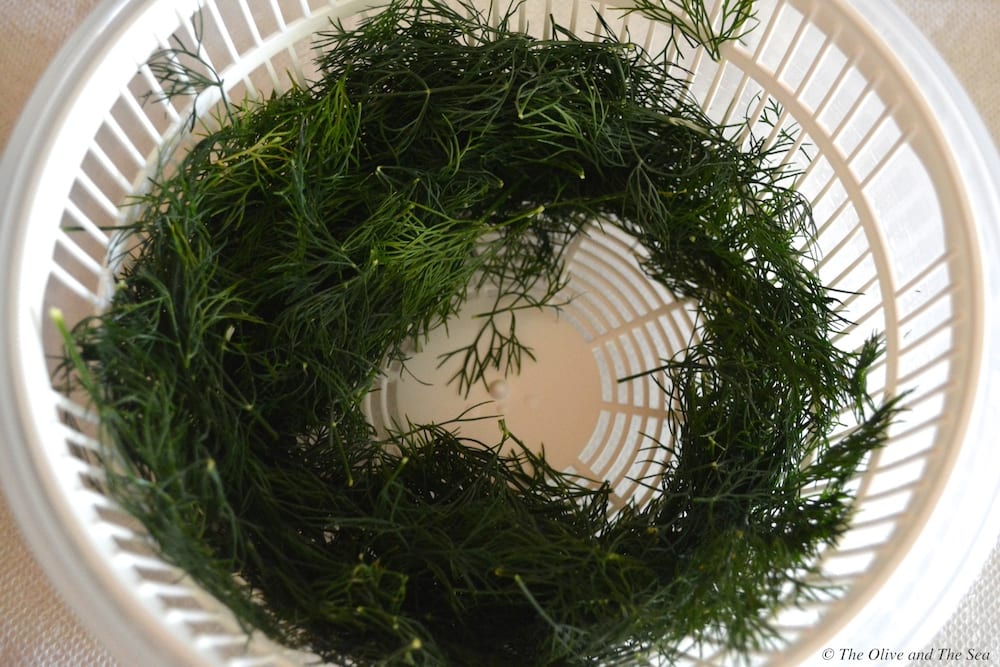
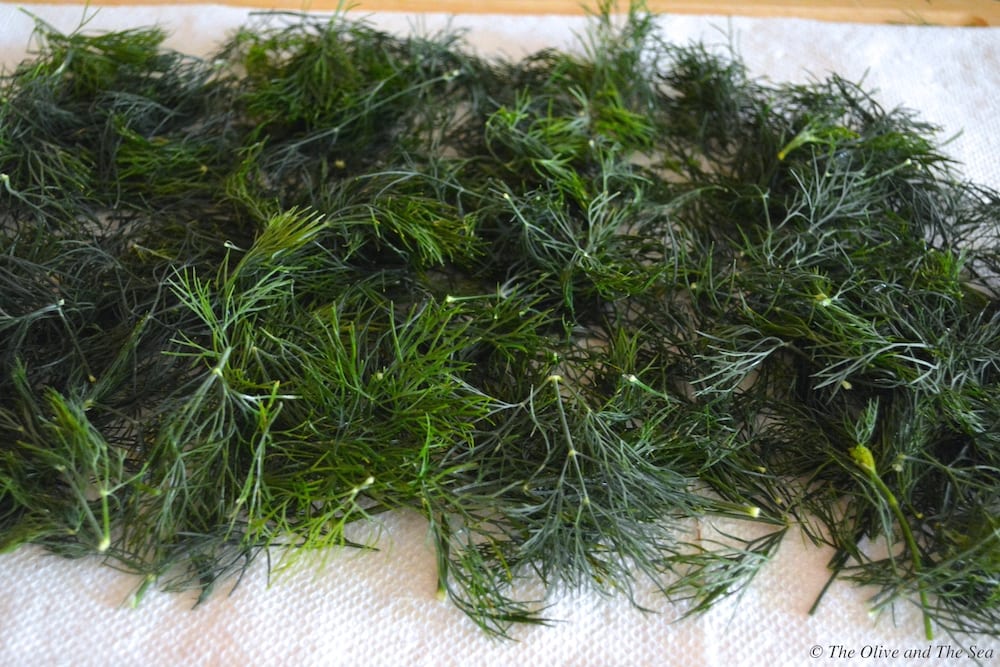
- Once fully dried, place the dill in a zip lock bag, removing as much air as possible, and store in the freezer
- When a recipe calls for dill, simply remove the desired amount from the bag, and place back in the freezer
